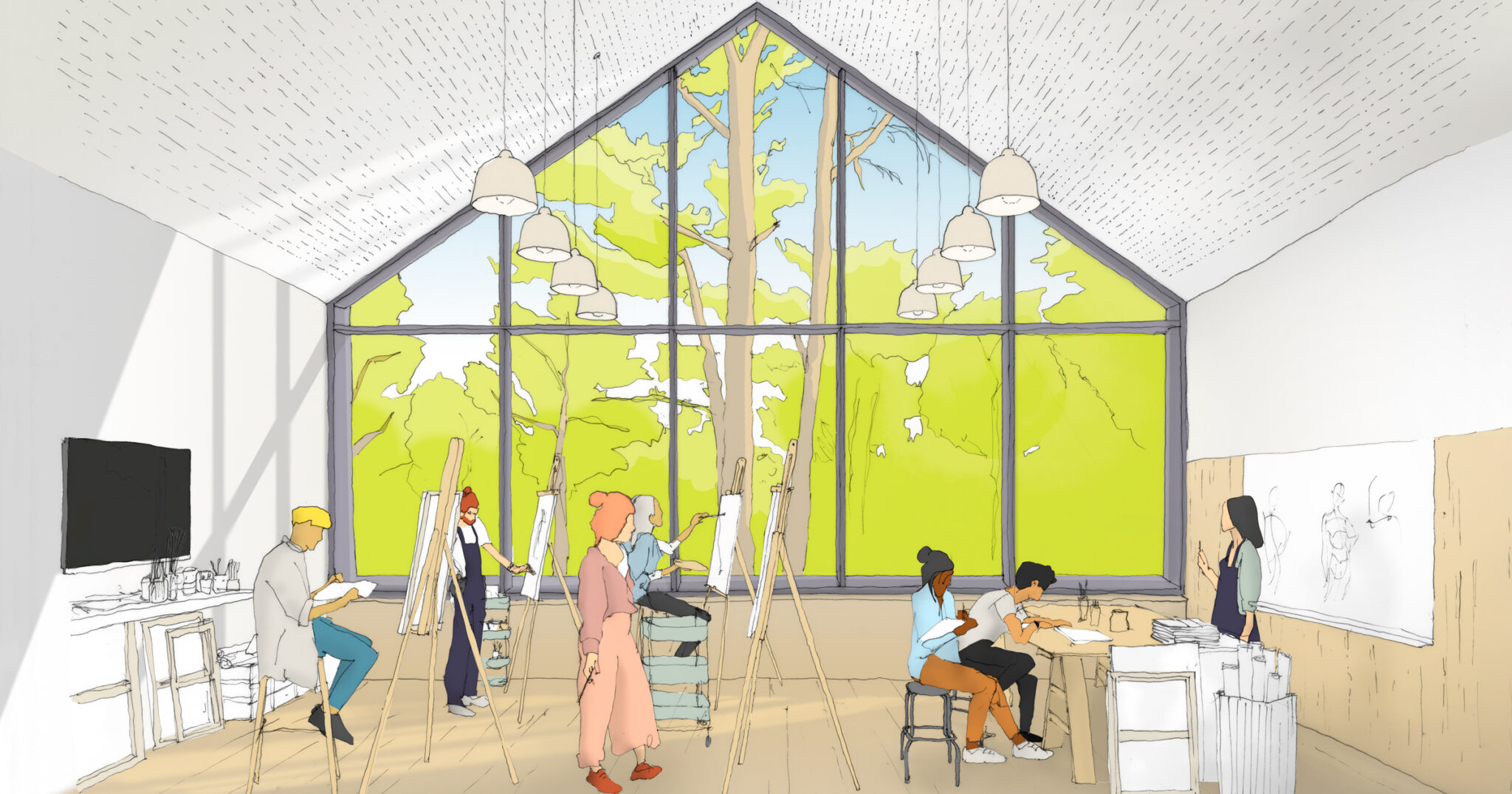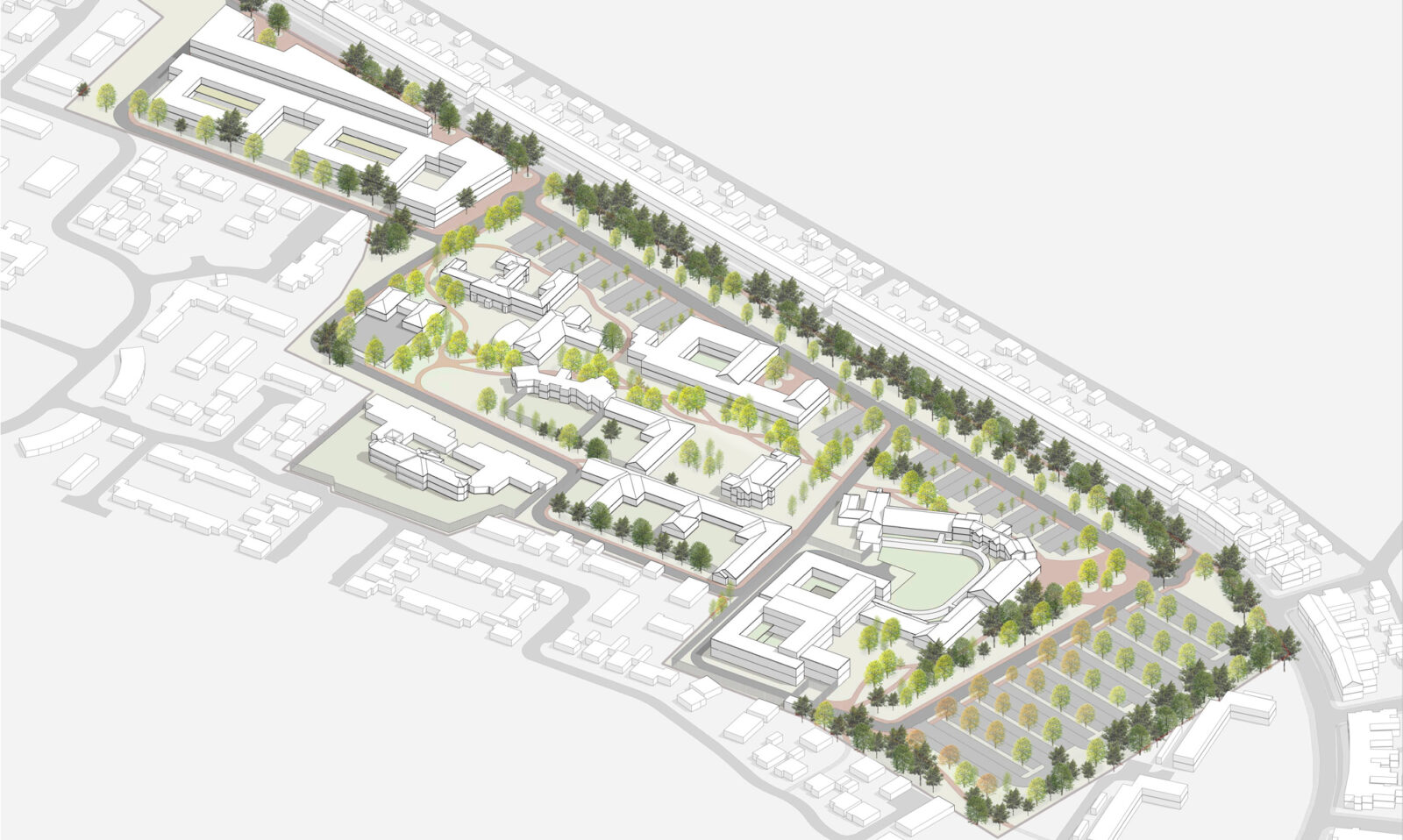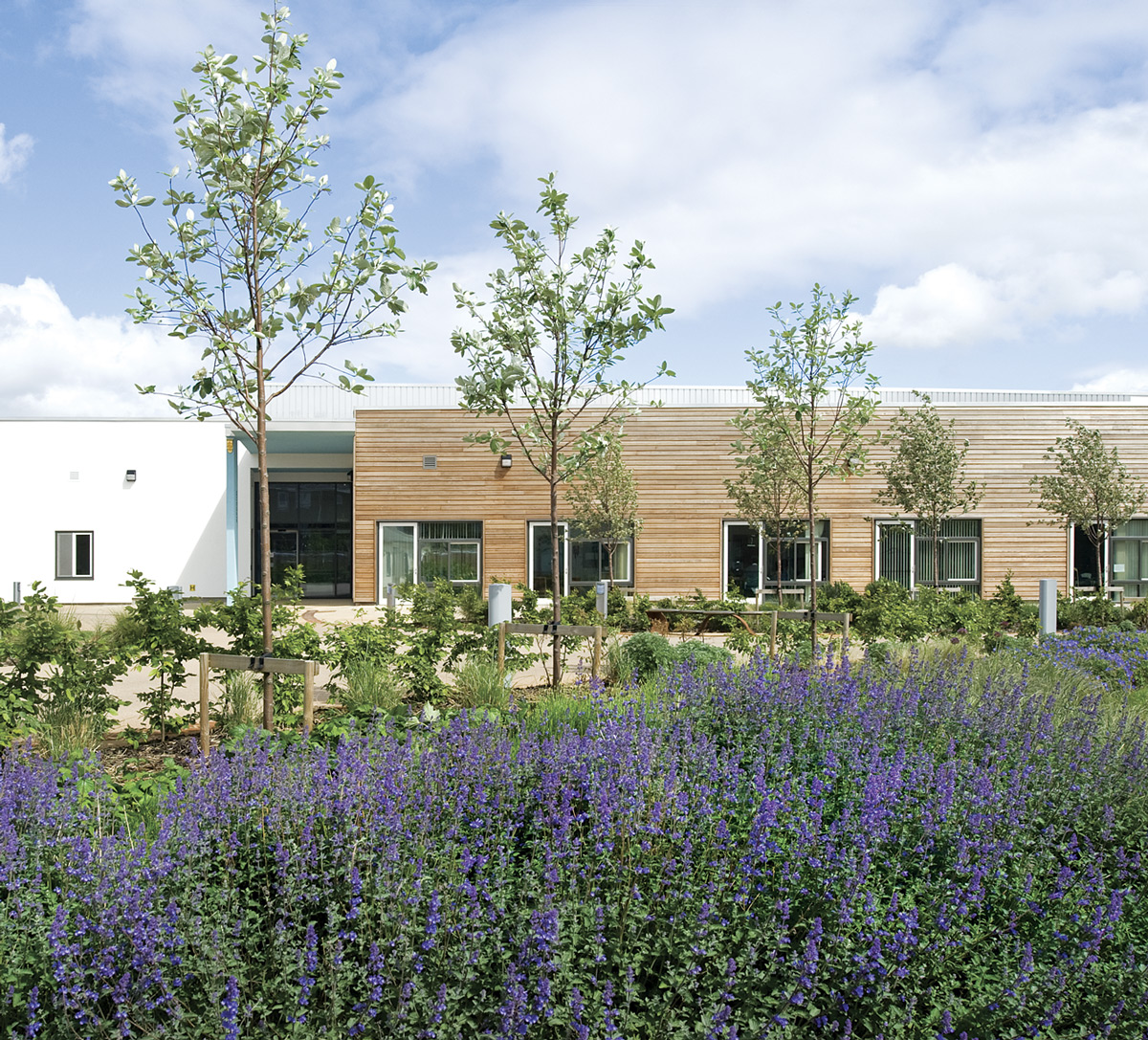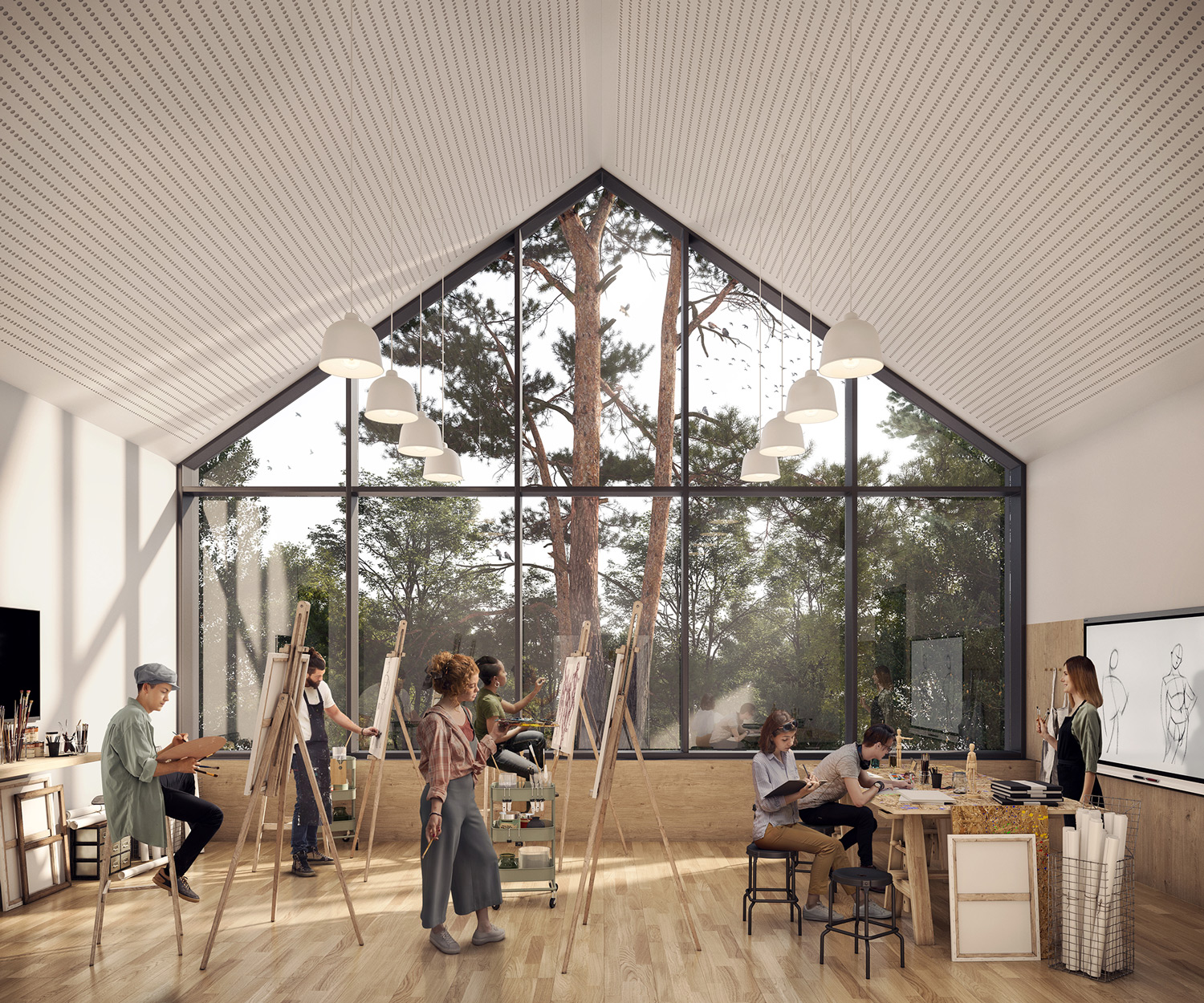How can integrated care be more than the sum of its parts?
At European Healthcare Design Conference 2022, we invited an informed panel to explore the future of integrated care. This is what we discovered.

With the NHS in England embarking on a round of investment in mental health infrastructure, it’s useful to set this in a longer-term context to understand why there is pressure for change and to appreciate what kind of change in infrastructure is needed, and what will deliver long term value.
A decade ago, we were celebrating the end of the closure of the asylums , a process that had began in earnest with Enoch Powell’s water towers speech, half a century earlier. However, the closure of the old hospitals was never backed by a corresponding investment in community mental health services, social care and vital infrastructure. Now, the NHS Trust which inherited the highest level of mental health and learning disabilities bed closures, is urgently seeking funds to increase patient capacity.

The Fairfield Three Counties Asylum, which closed in 1999.
The closure of the asylums was driven by changes in medical practice, the emergence of anti-psychotic drugs, and shifts in social expectations. The process was generally viewed as being beneficial to patients and society.
However, as with the reduction in acute hospital beds, there is now concern that mental health bed capacity is too low. The Royal College of Psychiatrists estimate the immediate shortfall to be 1,060 beds. To make matters worse, of the beds that are currently available, a proportion are considered inadequate — at the end of May 2021 there were 1,135 beds in unsatisfactory dormitory settings. There is also a critical lack of specialist mental health beds, particularly for child and adolescent mental health, eating disorders, perinatal mental health and specialist learning disabilities services.
As well as planning new infrastructure, the major challenge for any NHS provider is supplying expanded services that are affordable, deliver social value and are able to be resourced with limited workforce availability. This means reviewing and increasing the density of the existing estate, so that existing assets are being used efficiently, and the workforce is available locally to deliver increased capacity, a wider range of services, or both.
Although new facilities are often essential to meet the minimum basic standards for inpatient accommodation, a mix of refurbishment and new building often represents the most pragmatic, sustainable, and best value option. Any investment needs to sit alongside a long-term estates strategy and masterplan.

A masterplan for forensic mental health services including new build elements and re-purposing of existing buildings.
Investment in new mental health infrastructure must respond to the requirements of services, providing the right capacity and supporting planned activity. However, mental health services change over time. To deliver long-term value, new mental health buildings must be flexible and adaptable, not only providing for mental health needs, but being able to cater for acute surge capacity, providing step-down and step-up accommodation.
To be effective, mental health inpatient units must cater for alternative patient groups and staffing models. An experienced design team will be able to model systems of clustering and “swing zones” that support alternative operating modalities.
As well as considering structural adaptability, to design for a long life, good quality environments should be sustainable, robust and easily maintained. This means low-carbon and very energy efficient design, using components that are safe and well-constructed. Efficient engineering services are increasingly important in modern buildings. These must be discreet, but at the same time easily managed.
Recent evidence shows that factors in the environment play an important role in patient recovery. Well planned settings can result in shorter stays and better outcomes for patients. A safer environment reduces the incidence of self-harm and violence, which in turn reduces stress and illness amongst staff and patients.

Roseberry Park Hospital: Bedrooms are intimately entwined around a series of gardens and courtyards with generous and free access to the outdoors.

Clock View Hospital: Views to nature and timber finishes contribute to a therapeutic environment.
A therapeutic environment which provides good daylight, views, ventilation and calming acoustics, supports much better treatment and communication, and promotes wellbeing. Safe and self-directed access to gardens and nature help relaxation and widen the range of activities and experience for the recovering patient.
This has been demonstrated at Blossom Court, our new mental health inpatient building at St Ann’s Hospital in London, which prioritises modern therapeutic spaces with independent access to outdoor space. The unique two-storey arrangement sees four wards stacked around two private courtyards, creating secluded views, abundant daylight and a positive focal point for patients. A generous terrace on each upper level ensures both storeys have safe, direct, outdoor access.
Since completion, the Trust has reported that compared to the previous accommodation, seclusion and rapid tranquilisation of patients has significantly reduced while physical restraint has almost entirely stopped, allowing staff and patients to better focus on recovery.
During our work over the last thirty years in the planning and delivery of successful mental health infrastructure, we have often been involved in the process from the first step of identifying the need. This has given us an insight into some implementable actions which can increase the likelihood of success:

A specialist eating disorders unit added to a wooded area on an existing hospital site.

The natural surroundings contribute to the therapeutic quality of the internal spaces.
Much of this work may be done in-house, however we are always happy to offer our impartial advice on a suitable approach, should you need it.
Robust planning has always formed a major part of our design approach, and its value has been proven where significant adaptation has been required years after project completion.
We are currently in the process of revisiting several existing facilities in Northumberland as part of a major rationalisation of the Trust’s mental health provision. As part of this programme, Bamburgh Clinic—which we completed in 2006—is to be converted to an acute facility when forensic patients are relocated. Because the underlying plan is adaptable, very little change is needed to prepare the building for this new use.


Bamburgh Clinic shortly after opening in 2006.
As the need for capacity in mental health increases, the challenge will not only be in creating new infrastructure, but in ensuring we have the right infrastructure in the right places, and that is as much about adapting existing stock as it is building new. Where new facilities are needed, they must be flexible and adaptable for future needs, and provide a therapeutic environment that aids recovery. As this ultimately, is the best way to reduce the need for additional capacity.
At European Healthcare Design Conference 2022, we invited an informed panel to explore the future of integrated care. This is what we discovered.